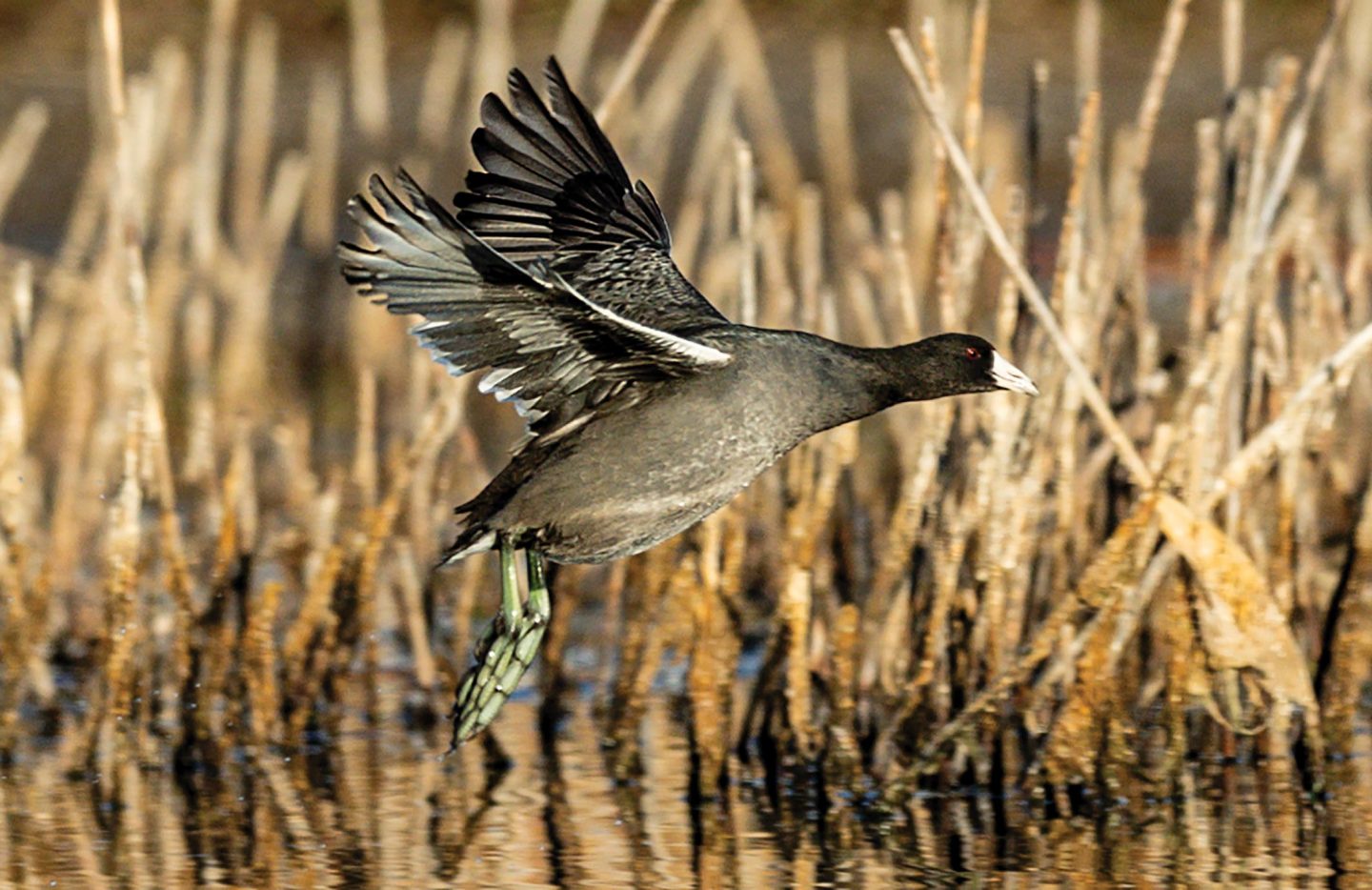
By Joel Jorgensen, Nongame Bird Program Manager
Nebraska’s birds possess so much beauty. Whether it be the elegance of an American avocet, refinement of the black-necked stilt, charm of an eastern bluebird, grandeur of a whooping crane or grace of the Forster’s tern. For all the aesthetically magnificent birds in the state, there are also those species that were absent on the day when admirable attributes were being handed out. Chief among the species that fail to inspire awe in us humans is the American coot.
Often found among several dapper duck species in marshes and wetlands, coot flocks can dominate a wetland but usually fail to attract attention. Its sooty gray color does not compare to the green-headed mallards or amber-headed canvasbacks. It plods along in the marsh making squawking noises. And perhaps the oddest appendage is revealed when this bird clumsily takes flight. Unlike the webbed feet of waterfowls that are delicately tucked close to the body when they take flight, the green feet with lobed toes of the coot dangle haplessly below its body. However, like most creatures not burdened by beauty, there is often more to the indomitable coot than its appearance.
Perhaps the most entertaining aspect of the American coot are the territorial quarrels they engage in during spring. Males defend territories and fend off rivals by raising their wings and extending their necks over the water and charging toward each other. Actual physical contact is not infrequent, and their awkward feet are used as weapons to claw at each other. These scuffles can be constant on marshes with favorable habitat when males are establishing territories in spring. Occasionally, the turf battles can result in death of the weaker bird.
Outside the breeding season, coots will often form dense flocks on just about any water body. Sometime these flocks will make landfall, and birds will move onto shore where they will graze on vegetation. If they are approached by a perceived predator, including humans, they will collectively sprint back to the water in an exercise of organized chaos. While coots may be the Rodney Dangerfield of the bird world, they also represent an important part of our state’s birdlife, and unlike Rodney, they can get plenty of respect and appreciation.
